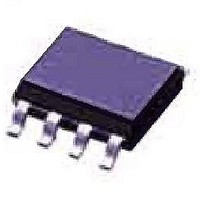ATTINY12L-4SU Atmel, ATTINY12L-4SU Datasheet - Page 48

ATTINY12L-4SU
Manufacturer Part Number
ATTINY12L-4SU
Description
Microcontrollers (MCU) AVR 1K FLASH 64B EE 3V 4MHZ
Manufacturer
Atmel
Datasheet
1.ATTINY12V-1SI.pdf
(94 pages)
Specifications of ATTINY12L-4SU
Processor Series
ATTINY1x
Core
AVR8
Data Bus Width
8 bit
Program Memory Type
Flash
Program Memory Size
1 KB
Maximum Clock Frequency
4 MHz
Number Of Programmable I/os
6
Number Of Timers
1
Maximum Operating Temperature
+ 85 C
Mounting Style
SMD/SMT
Package / Case
SOIC
3rd Party Development Tools
EWAVR, EWAVR-BL
Development Tools By Supplier
ATAVRDRAGON, ATSTK500
Minimum Operating Temperature
- 40 C
Package
8SOIC EIAJ
Device Core
AVR
Family Name
ATtiny
Maximum Speed
4 MHz
Operating Supply Voltage
3.3|5 V
Interface Type
SPI
Operating Temperature
-40 to 85 °C
Lead Free Status / Rohs Status
Details
Available stocks
Company
Part Number
Manufacturer
Quantity
Price
Part Number:
ATTINY12L-4SU
Manufacturer:
MICROCHIP/微芯
Quantity:
20 000
Memory
Programming
Program (and Data)
Memory Lock Bits
Fuse Bits in ATtiny11
Fuse Bits in ATtiny12
48
ATtiny11/12
The ATtiny11/12 MCU provides two lock bits which can be left unprogrammed (“1”) or
can be programmed (“0”) to obtain the additional features listed in Table 21. The lock
bits can only be erased with the Chip Erase command
Table 21. Lock Bit Protection Modes
Note:
The ATtiny11 has five fuse bits, FSTRT, RSTDISBL and CKSEL2..0.
•
•
•
The status of the fuse bits is not affected by Chip Erase.
Note:
The ATtiny12 has eight fuse bits, BODLEVEL, BODEN, SPIEN, RSTDISBL and
CKSEL3..0. All the fuse bits are programmable in both High-voltage and Low-voltage
Serial programming modes. Changing the fuses does not have any effect while in pro-
gramming mode.
•
•
•
•
Mode
Memory Lock Bits
1
2
3
FSTRT: See Table 8, “Start-up Times for the ATtiny11 (V
which value to use. Default value is unprogrammed (“1”).
When RSTDISBL is programmed (“0”), the external reset function of pin PB5 is
disabled.
CKSEL2..0: See Table 3, “Device Clocking Options Select,” on page 10, for which
combination of CKSEL2..0 to use. Default value is “100”, internal RC oscillator.
The BODLEVEL Fuse selects the Brown-out Detection level and changes the start-
up times. See “Brown-out Detection (ATtiny12)” on page 27. See Table 10,
“ATtiny12 Clock Options and Start-up Times,” on page 25. Default value is
programmed (“0”).
When the BODEN Fuse is programmed (“0”), the Brown-out Detector is enabled.
See “Brown-out Detection (ATtiny12)” on page 27. Default value is unprogrammed
(“1”).
When the SPIEN Fuse bit is programmed (“0”), Low-Voltage Serial Program and
Data Downloading is enabled. Default value is programmed (“0”). Unprogramming
this fuse while in the Low-Voltage Serial Programming mode will disable future in-
system downloading attempts.
When the RSTDISBL Fuse is programmed (“0”), the external reset function of pin
PB5 is disabled.
while in the Low-Voltage Serial Programming mode will disable future in-system
downloading attempts.
1. In the High-voltage Serial Programming mode, further programming of the fuse bits
1. If the RSTDISBL Fuse is programmed, then the programming hardware should apply
LB1
1
0
0
are also disabled. Program the fuse bits before programming the lock bits.
+12V to PB5 while the ATtiny11 is in Power-on Reset. If not, the part can fail to enter
programming mode caused by drive contention on PB0.
(1)
Default value is unprogrammed (“1”).
LB2
1
1
0
(1)
Protection Type
No memory lock features enabled.
Further programming of the Flash (and EEPROM for ATtiny12) is
disabled.
Same as mode 2, and verify is also disabled.
Default value is unprogrammed (“1”). Programming this fuse
(1)
.
CC
= 2.7V),” on page 23 for
1006F–AVR–06/07

















